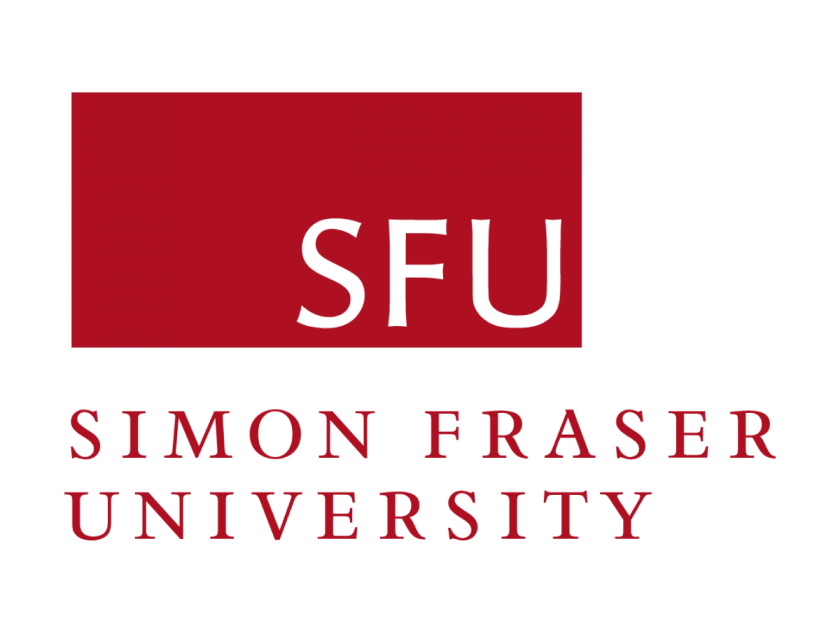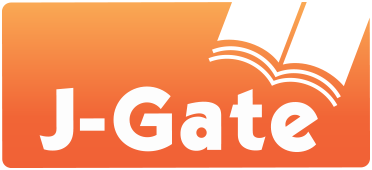Procedural and Declarative Knowledge: The Swedish and Vietnamese learners' acquisition of knowledge in English grammar, and Pedagogical Implications
DOI:
https://doi.org/10.54855/ijte.222115Keywords:
English language teaching, procedural knowledge, declarative knowledge, second language acquisitionAbstract
In this study, the L2 acquisition of English third person-s in different settings is examined. Two types of knowledge are declarative knowledge as the knowledge about a grammatical rule, and procedural knowledge as the ability to use these rules in spoken production. Data on procedural and declarative knowledge was collected from 32 young L2 learners in Sweden and 44 in Vietnam. The learners' acquisition of English grammar was assessed using elicitation instruments that captured procedural and declarative knowledge of English subject-verb agreement on third person singular s (3-sg-s). Procedural knowledge was tested using communicative tasks where the participants were asked to describe a boy's habitual action orally in a picture series. Declarative knowledge of grammar was investigated by means of a metalinguistic task. The learners were asked to correct the sentences and explain the reasons for their choices by referring to grammatical rules. The average scores on procedural and declarative tests within each group were statistically analyzed. The results show differences in learner outcomes, in that the Swedish learners are better at procedural knowledge and the Vietnamese learners are better at declarative knowledge. It is suggested the two types of knowledge are independent of each other. Implications for language learning and teaching for young learners will be further discussed based on the teaching practices as found in Son (2018).
References
Anderson, J.R. (1983). The architecture of cognition. Cambridge, MA.: Harvard University Press.
Berko J. (1958). The child’s learning of English morphology. Word, 14, 150-177. http://dx.doi.org/10.1080/00437956.1958.11659661
Bialystok, E. (2001). Bilingualism in development: Language, literacy, and cognition. Cambridge University Press. http://dx.doi.org/10.1017/CBO9780511605963
Cohen, A. & Robbins, M. (1976). Toward assessing interlanguage performance: The relationship between selected errors, learners’ characteristics and learners’ explanations. Language Learning, 26(1), 45-66. http://dx.doi.org/10.1111/j.1467-1770.1976.tb00259.x
De Graaf, R. (1997). The experanto experiment: Effects of explicit instruction on second language acquisition. Studies in Second Language Acquisition, 19, 249–297.
DeKeyser, R. M. (1995) Learning second language grammar rules: An experiment with a miniature linguistic system. Studies in Second Language Acquisition, 17(3), 379–410. http://dx.doi.org/10.1017/S027226310001425X
DeKeyser, R.M. (1997). Beyond Explicit rule learning. Studies in Second Language Acquisition,19, 195-221. http://dx.doi.org/10.1017/S0272263197002040
Di Biase, Kawaguchi, & Yamaguchi, (2015). The development of English as a second language. In Bettoni, C & Di Biase, B. (Eds) Grammatical Development in Second Languages: Exploring the boundaries of Processability Theory (pp. 85-115). Eurosla Monographs series 3.
Doughty, C., & Williams, J. (1998). Focus on Form in Classroom Second Language Acquisition. The Cambridge Applied Linguistics Series. Cambridge University Press
Dyson, B. (2009). Processability Theory and the role of morphology in ESL development: A longitudinal study. Second Language Research, 25(3), 355–376.
Dyson, B., & Håkansson, G. (2017). Understanding second language processing: A focus on Processability Theory (Vol. 4). John Benjamins Publishing Company. http://dx.doi.org/10.1075/bpa.4
Ellis, R. (2005). Measuring implicit and explicit knowledge of a second language: A psychometric study. Studies in Second Language Acquisition, 27, 141–172. http://dx.doi.org/10.1017/S0272263105050096
Ellis, R. (2006). Current Issues in the Teaching of Grammar: An SLA Perspective. TESOL Quarterly, 40(1), 83-107. http://dx.doi.org/10.2307/40264512
Ellis, R. (2008). Investigating grammatical difficulty in second language learning: Implications for second language acquisition research and language testing. International Journal of Applied Linguistics, 18, 4–22. http://dx.doi.org/10.1111/j.1473-4192.2008.00184.x
Ellis, R. (2012). Language teaching research and language pedagogy. West Sussex: Wiley-Blackwell. http://dx.doi.org/10.1002/9781118271643
Goldschneider, J.M., & DeKeyser, R.M. (2001). Explaining the “Natural Order of L2 Morpheme Acquisition in English: A Metaanalysis of multiple determinants. Language Learning, 51(1), 1-50. http://dx.doi.org/10.1111/1467-9922.00147
Green, P.S. & Hecht K. (1992). Implicit and Explicit Grammar: An Empirical Study. Applied Linguistics, 13(2), 168-184.
Gutierrez, X. (2017). Explicit knowledge of the Spanish Subjunctive and Accurate Use in Discrete-Point, Oral Production, and Written Production Measures. Canadian Journal of Applied Linguistics, 20(1), 1-30.
Hulstijn, J. (1995). Not all grammar rules are equal: giving grammar instruction its proper place in foreign language teaching. In R. Schmidt (Ed.) Attention and awareness in foreign language learning (pp. 359-386). Honolulu: Second Language Teaching and Curriculum Center.
Hulstijn, J. H., & Hulstijn, W. (1984). Grammatical errors as a function of processing constraints and explicit knowledge. Language Learning, 34(1), 23–43. http://dx.doi.org/10.1111/j.1467-1770.1984.tb00994.x
Itani-Adams, Y. (2007). One child, two languages: Bilingual first language acquisition in Japanese and English (Doctoral dissertation). University of Western Sydney, Sydney.
Källkvist, M., & Petersson, S. (2006). An s, or not an s; that is the question: Swedish teenage learners’ explicit knowledge of subject-verb agreement in English. In J. Einarsson, E. Larsson Ringqvist & M. Lindgren (Eds.), Språkforskning på didaktisk grund: Rapport från ASLA:s höstsymposium [Language research on didactic basis: Report from ASLA Autumn Symposium] (pp. 112–133). Växjö: Växjö University.
Krashen, S. (1982). Principles and Practice in Second Language Acquisition. Oxford: Pergamon
Larsen-Freeman, D. (2003). Teaching language: From grammar to grammaring. Heinle & Heinle Pub.
Lenzing, A. (2013). The Development of the Grammatical System in Early Second Language Acquisition. Amsterdam: John Benjamins. http://dx.doi.org/10.1075/palart.3
Lightbown, P. (1983). Acquiring English L2 in Quebec classrooms. In Felix, S. & Wode, H. (eds). Language Development at the Crossroads (pp. 101-120). Tübingen: Günther Narr Verlag.
Macrory, G., & Stone, V. (2000). Pupil progress in the acquisition of the perfect tense in French: The relationship between knowledge and use. Language Teaching Research, 4(1), 55–82.
MacWhinney, B. (2000). The CHILDES Project: Tools for Analyzing Talk. Transcription format and programs (3rd ed., Vol. 1); The database (3rd ed., Vol. 2). Mahwah, NJ: Lawrence Erlbaum Associates.
Malmberg, P., Bergström, I., Håkanson, U., Tornberg, U., & Öman, M. (2000). I huvudet på en elev. Projektet STRIMS: Strategier vid inlärning av moderna språk [In the head of a student. The STRIMS project: Strategies for learning modern languages]. Stockholm: Bonniers.
Meisel, J., Clahsen, H. & Pienemann, M. (1981). On determining developmental sequences in natural second language acquisition. Studies in Second Language Acquisition, 3(2), 109-135.
Nguyen, N. M. (2021). Using Stories in Presenting English Grammar to Vietnamese Young Learners. International Journal of TESOL & Education, 1(3), pp. 286-300. EOI: http://eoi.citefactor.org/10.11250/ijte.01.03.016
Norris, J.M. & Ortega, L. (2000). Effectiveness of L2 Instruction: A Research Synthesis and Quantitative Meta-Analysis. Language Learning, 50(3), 417-528. http://dx.doi.org/10.1111/0023-8333.00136
Paradis, M. (2004). A neurolinguistic theory of bilingualism. Amsterdam: John Benjamins. http://dx.doi.org/10.1075/sibil.18
Pienemann, M. (1998). Language processing and second language development: Processability Theory. Amsterdam: John Benjamins. http://dx.doi.org/10.1075/sibil.15
Pienemann, M. (2015). An outline of processability theory and its relationship to other approaches to SLA. Language Learning, 65(1), 123-151.http://dx.doi.org/10.1111/lang.12095
Reber, As S,, Kassin, S. M., Lewis, S., & Cantor, G. W. (1980). On the relationship between implicit and explicit modes in the learning of a complex rule structure. Journal of Experimental Psychology: Human Learning and Memory, 6, 492-502. http://dx.doi.org/10.1037/0278-7393.6.5.492
Robinson, P. (1996). Learning simple and complex second language rules under implicit, incidental, rule-search and instructed conditions. Studies in Second Language Acquisition, 18, 27-68. http://dx.doi.org/10.1017/S0272263100014674
Roehr, K. & Gánem-Gutiérrez, G. A. (2009). The status of metalinguistic knowledge in instructed adult L2 learning. Language Awareness, 18(2), 165-181. http://dx.doi.org/10.1080/09658410902855854
Roehr, K. (2008). Metalinguistic knowledge and language ability in university-level learners. Applied Linguistics, 29, 179-199. http://dx.doi.org/10.1093/applin/amm037
Seliger, H. W. (1979). On the Nature and Function of Language Rules in Language Teaching. TESOL Quarterly, 13(3), 359-369. http://dx.doi.org/10.2307/3585883
Siemund, P. & Lechner, S. (2015). Transfer effects in the acquisition of English as an additional language by bilingual children in Germany. In Peukert, H. (ed) Transfer Effects in Multilingual Language Development (147-160) Amsterdam: John Benjamins.
Son, T.V. (2018). English in Primary Education in Sweden and Vietnam. Teaching practices, learner outcomes and out-of-school exposure (Doctoral Dissertation). Diss. Travaux de Línstitut de Linguistique de Lund 55. Lund University.
Sorace, A. (1985). Metalinguistic knowledge and language use in acquisition-poor environments. Applied Linguistics, 6(3), 239-254. http://dx.doi.org/10.1093/applin/6.3.239
Tran, T.Q.T., Nguyen, T.M.N., Luu, T.T., & Pham, T.B.N. (2021).An evaluation of English non-majored freshmen’s attitude towards EFL learning at Can Tho University of Technology. International Journal of TESOL & Education, 1(2), 72-98.EOI: 10.11250/ijte.01.02.005
Yamaguchi, Y. (2009). The development of plural marking and plural agreement in child English L2 Acquisition. In J.-U. Keßler & D. Keatinge (Eds.), Research in second language acquisition: Empirical evidence across languages (pp. 9–39). Newcastle upon Tyne: Cambridge Scholars.
Downloads
Published
Issue
Section
License
Copyright (c) 2021 Vi Thanh Son

This work is licensed under a Creative Commons Attribution 4.0 International License.
The copyright of all articles published in the International Journal of TESOL & Education (ijte) remains with the Authors, i.e. Authors retain full ownership of their article. Permitted third-party reuse of the open access articles is defined by the applicable Creative Commons (CC) end-user license which is accepted by the Authors upon submission of their paper. All articles in the ijte are published under the CC BY-NC 4.0 license, meaning that end users can freely share an article (i.e. copy and redistribute the material in any medium or format) and adapt it (i.e. remix, transform and build upon the material) on the condition that proper attribution is given (i.e. appropriate credit, a link to the applicable license and an indication if any changes were made; all in such a way that does not suggest that the licensor endorses the user or the use) and the material is only used for non-commercial purposes.
Authors retain copyright and grant the journal the right of first publication with the work simultaneously licensed under a Creative Commons Attribution 4.0 International License that allows others to share the work with an acknowledgment of the work's authorship and initial publication in this journal.
Authors are able to enter into separate, additional contractual arrangements for the non-exclusive distribution of the journal's published version of the work (e.g., post it to an institutional repository, in a journal or publish it in a book), with an acknowledgment of its initial publication in this journal.











